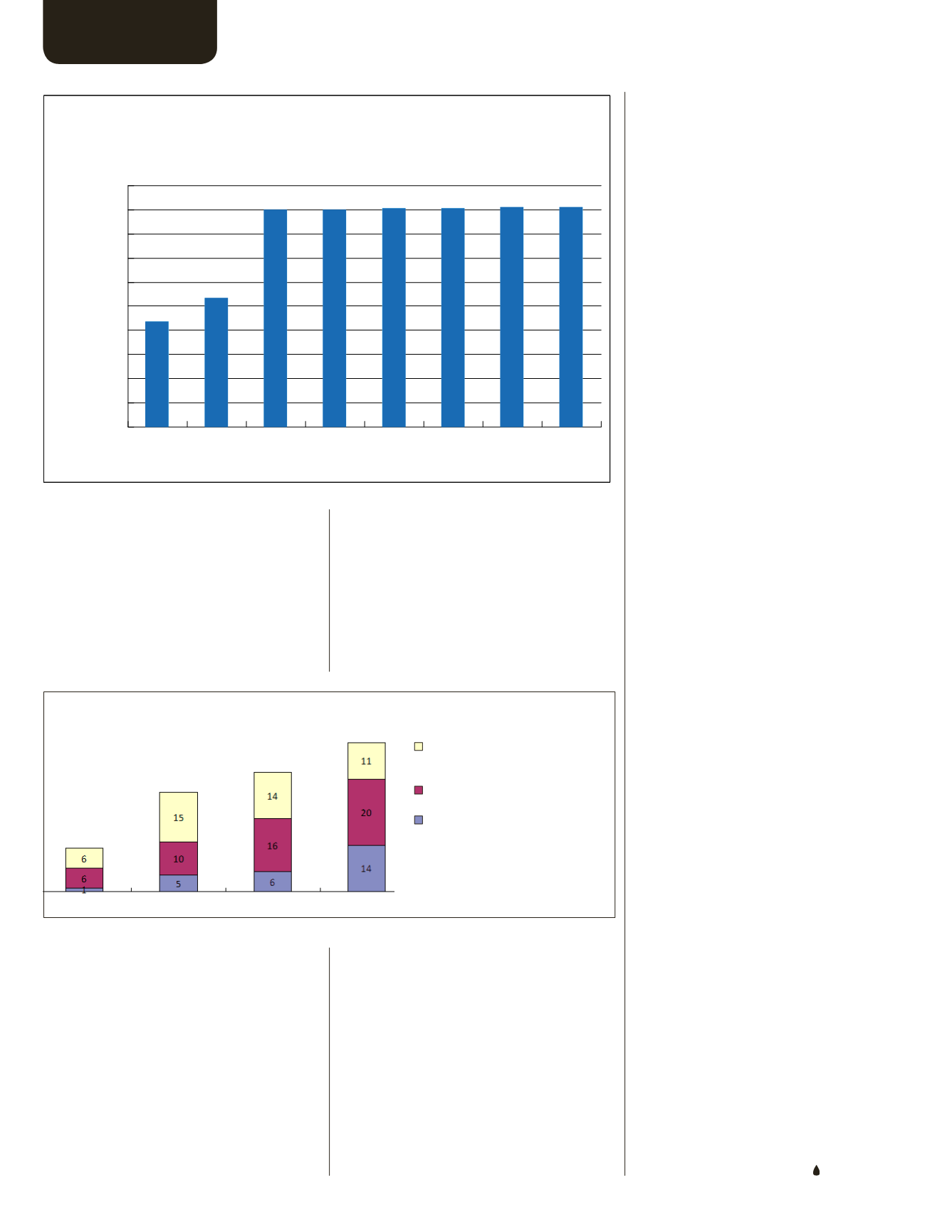
FUELS & LUBES INTERNATIONAL
Quarter Three 2014
34
F E A T U R E
vPvB (very persistent and very bio-accumulative)
assessments, exposure assessment and risk charac-
terisation.
Under TSCA, registrants are only required to
provide available information while EPA accom-
plishes the safety report and conducts the evaluation.
A significant aspect of the newmeasures is hav-
ing a more defined qualification of the test institution
for the Hazard Evaluation report. The rules also
require that all evaluation reports be certified by a
qualified test centre. Test standards and requirements
are also regulated to ensure the accuracy of the as-
sessment.
Enforcingstricter regulations
Now fully enforced in China, “The New
Measures for the Environmental Management of
NewChemical Substances,” carries stricter penalties
for non-compliance. Since it takes many elements
fromREACH as well as TSCA, it has been dubbed
as “China REACH.” But the regulations are not to
be taken lightly as these are rooted and aimed at
meeting local market needs. Moreover, the new
measures are directed at strengthening environmen-
tal management and public safety through improved
chemical substances management.
Feedback frommanufacturers and importers
has been positive so far. Normal notifications and
certifications are increasing year after year from 2011
to 2013. There were only two notifications in 2011,
which rose to 55 notifications and 43 new substances
in 2012; in 2013, 73 notifications and 81 new sub-
stances were recorded. Among the new substances
are hazardous chemical substances and hazardous
chemical substances of priority environmental man-
agement, as indicated on the following chart:
The increasing notifications and certifications
for new chemical substances is a reflection of the
improvement in the system, which is also recog-
nised by market players that include manufacturers,
importers and third parties.
The simplified notifications slowed down from
2011 to 2013, with 4,567 simplified notifications
in 2011, down to 3,402 in 2012 and 2,807 in 2013,
since most simplified registrations are valid for life.
Also, the filing of notifications for new chemical
substances used for the purpose of scientific research
is one of the major achievements: 964 notifications in
IECSC
化学物质数量
0
5,000
10,000
15,000
20,000
25,000
30,000
35,000
40,000
45,000
50,000
1997 2000 2005 2007 2008 2009 2010 2013
Source: MEP
2011; 890 notifications in 2012; and 899 notifica-
tions in 2013.
Besides the notifications of new chemical
substances, the CSR is a major part of the regula-
tion’s enforcement. Six companies were imposed
administrative penalties because they presented
false eco-toxicological test reports during their
joint notification of the new chemical substance
in 2011. Each of these companies—Huntsman
Textile Effects (China) Co., Ltd., Huntsman Textile
Effects (Qingdao) Co., Ltd., Huntsman (Thailand)
Co., Ltd., Huntsman (Singapore) Private Co., Ltd.,
Huntsman Chemical Industry Trading (Shang-
hai) Co., Ltd., and Huntsman AdvancedMaterial
(Hong Kong) Co., Ltd. —was fined CNY30,000
(USD4,868). While this is the first set of penal-
ties imposed since the implementation of the new
measures, it provides an example of how the new
regulations work within the global market.
Also, in order to supervise hazard chemicals
further after registration, the China MEP promul-
gated Order 22, known as “Measures for the Envi-
ronmental Management of Hazardous Chemical
Registration (Trial)”, which was enforced onMarch
1, 2013. Since then, companies that handle and
produce high environmental concern chemicals
need to obtain another registration certification for
environmental management fromMEP. The certifi-
cation is valid for three years. Any company caught
violating these measures are fined fromCNY5,000-
10,000 (USD811-1,623).
Aside from the penalties, the active implemen-
tation of these measures would have to be under-
taken to ensure compliance. “No further penalty
related to the newmeasures is reported from 2011
to 2014. The third round of checks and surveys was
carried out by the MEP in 2013 in accordance with
the newmeasures, and the result has not been pub-
lished yet,” one of the sources in the CRC-MEP said.
“Despite the improvement in the newmeasures, the
IECSC has been initiated 19 years ago, and we lack
staff in executing the regulation throughout China.
China has a large number of manufacturers and
importers, which far exceeds those in Europe and
the U.S. The top priorities would have been to raise
the penalties for violations and to strictly enforce
the regulations,” the source added.
Given the need to ensure public health and
safety as well as institute a policy aimed at protect-
ing the environment, China is expected to adopt in-
ternationally accepted standards that will ultimately
ensure the acceptable management of chemicals.
There may be hindrances in implementing this.
As the source in the CRC-MEP said: “TheMea-
sures for the Environmental Management of Haz-
ardous Chemical Registration (Trial) was enforced
sinceMarch 2013, but the supervision department
just began to register toxic substances accordingly
from2014; the enforcement division is not mature in
China.” He added that penalties related to hazardous
chemical substances emission can be huge in China,
so it is very important tomanage the hazardous
chemical substances at the source.
IECSC Number of Chemical Substances
Hazard Chemical Substances of
Environmental Management
Hazard Chemical Substances
Normal New Substances
Number of New Substances
2012 H1
2012 H2
2013 H1
2013 H2
Source: CRC-MEP


